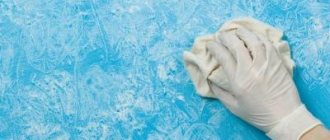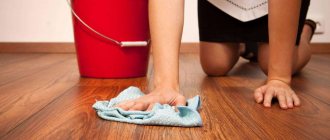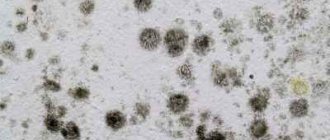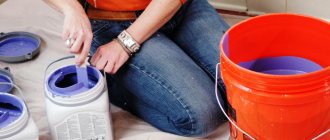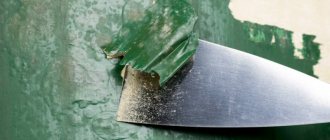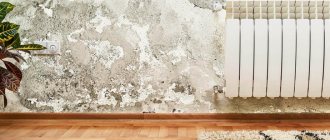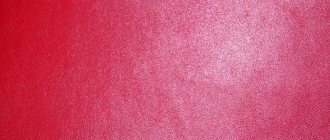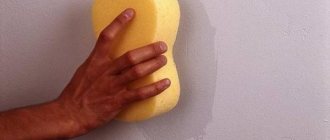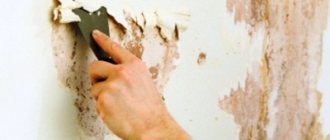There are many ways to remove paint from walls. They differ in speed of execution, require certain knowledge and compliance with safety standards.
By making the right choice, you can significantly facilitate repair work and speed up its implementation.
In this article, we will look at all the known ways to remove paint from walls yourself.
Solvents and removers
You can remove paint using special solutions. They are sold in hardware stores.
The products must be used according to the instructions:
- Remove dust and dirt from the wall.
- Apply the composition to its surface.
- Leave for effect.
- Clean off the paint with a spatula.
The holding time of the composition differs, depending on the aggressiveness of its components.
Top 3 best products
The best products for removing paint from walls:
Gel Owatrol Marine D1 .
This is a powerful water-based solvent that is suitable for removing any paint. You can get rid of 8 layers of coating at one time. The gel has a thick consistency. It is applied to the wall in a thick layer and left until the paint is completely dissolved. All you have to do is remove it with a brush and water. The cost of 1 liter of product is 1320 rubles.- Solvent 646 . Moisten a roller or brush with the liquid, apply it to the wall, leave for 3-5 minutes, after which the softened paint is removed with a spatula. The cost of 1 liter is 200 rubles.
- Antikras wash . The product contains solvents that allow you to get rid of even old coatings. The liquid is applied to the wall in an even layer, left for 3-15 minutes, after which the paint is removed with a spatula. The cost of 1 kg of remover is 400 rubles. For 1 sq. m. it takes about 0.15 kg of product.
When using any paint remover, the area must be thoroughly ventilated.
Homemade composition
To prepare the wash yourself, you will need the following components:
- 2 parts ammonia.
- 1 part turpentine.
The resulting composition is applied to the wall and left for 20 minutes. When the coating begins to swell and fall off, it is removed with a spatula. Since the product has a pungent odor, you need to wear a respirator when working.
Which method is better to choose and why?
In each specific situation it is better to resort to a certain method, namely:
The safest way to remove oil paint is mechanically.
Its heat treatment can lead to fire if the wall surface is heated for too long. Professional repairmen do not recommend using a blowtorch or iron at all. If the choice nevertheless fell on heat treatment of the walls, then you need to stop at a construction hair dryer.- Chemical methods for removing old coating are considered effective, but you need to choose professional products. It is recommended to use them in well-ventilated areas and strictly according to the instructions.
- It is most convenient to clean water-based paint using newspapers. To do this, they are glued to the wall. When the composition dries, the paper is simply torn off with sharp movements. The coloring composition will come off along with it.
- When processing large areas, it is most rational to use electric tools: a drill with a chain or a grinder. Otherwise, the paint cleaning process will take several weeks.
- Corners and other hard-to-reach places are worked out with a spatula or chisel. You can also use solvents.
The right combination of several methods will allow you to deal with paint on the walls quickly and safely.
How to correctly calculate consumption
Numerous factors influence the calculation of the amount of cleaning agent:
- condition of the treated surface;
- number of layers;
- air temperature;
- coating characteristics.
It is recommended to apply the remover in a layer of the same thickness as the topcoat. In addition, air temperature significantly affects the flow rate. As the temperature rises, active evaporation of the remover from the surface begins.
Reference! The coating, applied in several dense layers, requires repeated treatment with a remover.
Do-it-yourself removal of different types of paint
There are recommendations for removing different types of paint. The choice of cleaning composition depends on this.
| Paint type | Preferred cleaning method |
| Oily | Mechanical or chemical cleaning method. |
| Acrylic | Solvents containing acetone or alcohols, mechanical cleaning. |
| Water-based | Mechanical method: with a grater or sandpaper. With a professional remover, or glue and newspaper. |
| Obsolete | It is best to combine several methods: large areas are treated with power tools, and hard-to-reach areas are treated with a remover or solvent. |
Cleaning different types of surfaces
Depending on the base of the surface on which the coloring composition is applied, the methods for removing it will differ.
| Wall type | Cleaning Features |
| Brick | You can use a drill with attachments. |
| Concrete | It is recommended to remove paint mechanically: with a spatula, an ax or a chisel. |
| Cement | It is faster and safer to remove paint from a cement wall using a sander. Such surfaces are not afraid of mechanical cleaning. |
| Plastered | It is not recommended to clean plastered walls using mechanical methods. It is better to use specialized chemistry. |
| Wooden | Wood is a soft species that can be easily damaged. It is unacceptable to handle it with chemicals or rough tools such as an ax. The best option is to use a chisel and hammer. This will increase the accuracy of the work and will not damage the wall. |
Preparation for wallpaper
In order for the wallpaper to stick well, the layer on which it is attached must be stronger and heavier than it . If they weigh more, they will very soon simply move away from the wall. Therefore, all cracked paint must be cleaned off. Defects must be puttied.
You can check whether the wallpaper will be securely fixed in a simple way: apply glue to the wall and leave until completely dry. If it is securely fixed and does not come off in the form of a film, then you can start gluing.
Oil and alkyd paints are sanded with sandpaper. The formed depressions will improve the adhesion of the glue to the surface.
Before covering a wall with wallpaper, you need to remove dust and other contaminants from it, and then prime it . They will adhere firmly to such a surface, even if all the coloring composition is not cleaned off.
You should not glue light wallpaper to walls painted with dark paint. It will show through them in ugly spots.
Removing acrylic paint
A wire brush and coarse sandpaper are suitable for removing acrylic paint. Wear rubber gloves to protect your hands during the process. If the paint you buy is of high quality, it will be more difficult to remove. If the simple method doesn't work, use the oil dye removal instructions.
Advice! If the surface coated with acrylic paint is planned to be painted with the same material in the future, then the previous layer does not need to be removed if it has retained its smoothness.
The most common mistakes
When performing work, inexperienced repairmen make the following mistakes:
To remove paint from large areas, only manual labor is used, for example, using a spatula. This takes a lot of time and effort. It is better to give preference to power tools.- Remove paint using a solvent in rooms with poor ventilation. Inhalation of toxic fumes can cause poisoning.
- Overheat the walls using a hair dryer or blowtorch. Such carelessness may cause a fire.
- Working too hard on the wall with an ax or similar tool. It will be difficult to cope with the emerging irregularities.
You cannot work without gloves, regardless of the chosen paint removal method.
Important Tips
Tips to take into account:
- If the paint has peeled off and cracked, then its dismantling is mandatory. Walls on which the coating fits tightly and cannot be cleaned mechanically can be left untouched.
- You can warm up the wall only in places where there are no wires or sockets.
- Personal protective equipment should always be used.
- When working with heating appliances, you should take care of your own safety and have fire extinguishing agents on hand.
When using methods that lead to the formation of a large amount of dust, a damp cloth should be placed at the threshold of the room. This will prevent it from spreading throughout the apartment.
Axe, hammer, chisel - rough but effective
This method can be called the most straightforward and simple. Simple - in terms of the primitiveness of the manipulations performed, of course, because you still have to put in enough effort. But if you have strong hands, patience and a tool at hand, then why not?
- requires serious leveling of the wall afterwards;
- ideal if ceramic tiles are used as a finishing material;
- all work must be carried out with a gauze bandage - in the process a lot of dust appears, which can cause irritation of the mucous membrane and suffocation;
- not suitable for walls made of gypsum board sheets, lining, plastic.
What you will need
- axe;
- hammer;
- chisel;
- water;
- rag.
Work order
- We take the ax in our hands and make notches all over the wall;
- generously moisten an area of about 2*2 meters with water - it’s faster and easier to do this with a regular sprayer, but if you don’t have one at hand, then an ordinary rag will do;
- give the wall time to absorb the liquid;
- then pick up a hammer and chisel and confidently clean off the oil layer in the places where the notches are made;
- fix the chisel at an acute angle to the wall - and things will go faster;
- then repeat the operation for the next section - do not try to master the entire wall at once: it is better to divide the existing area into 5-6 fragments and work with them sequentially.
Help from professionals
If you don’t want to remove the paint from the walls yourself, you can turn to specialists for help. The cost of work is determined by its volume. For each square meter you will have to pay at least 100 rubles .
You can find professional repairmen through advertisements in newspapers, on the Internet or on TV.
Preference should be given to those teams that have their own office. The longer the company operates, the better. Positive reviews are welcome .
To check them, you can try to contact the people who left them. The speed of work depends on the area of the room. A standard kitchen or bathroom takes no more than 2-3 days.
You can find out more about how to remove paint from kitchen walls yourself here, and from bathroom walls here.
When to shoot
In years past, painting walls has been popular in kitchens and bathrooms. In modern times, beautiful tile patterns have been included in the design, which cannot be laid without clearing the surface of the old paint.
But there are situations when this is not necessary, for example, if the wall will be covered with plasterboard in the future. In other cases, the coating is removed, since it does not promote adhesion (cohesion) of the material with adhesives, plasters and other building compounds.


